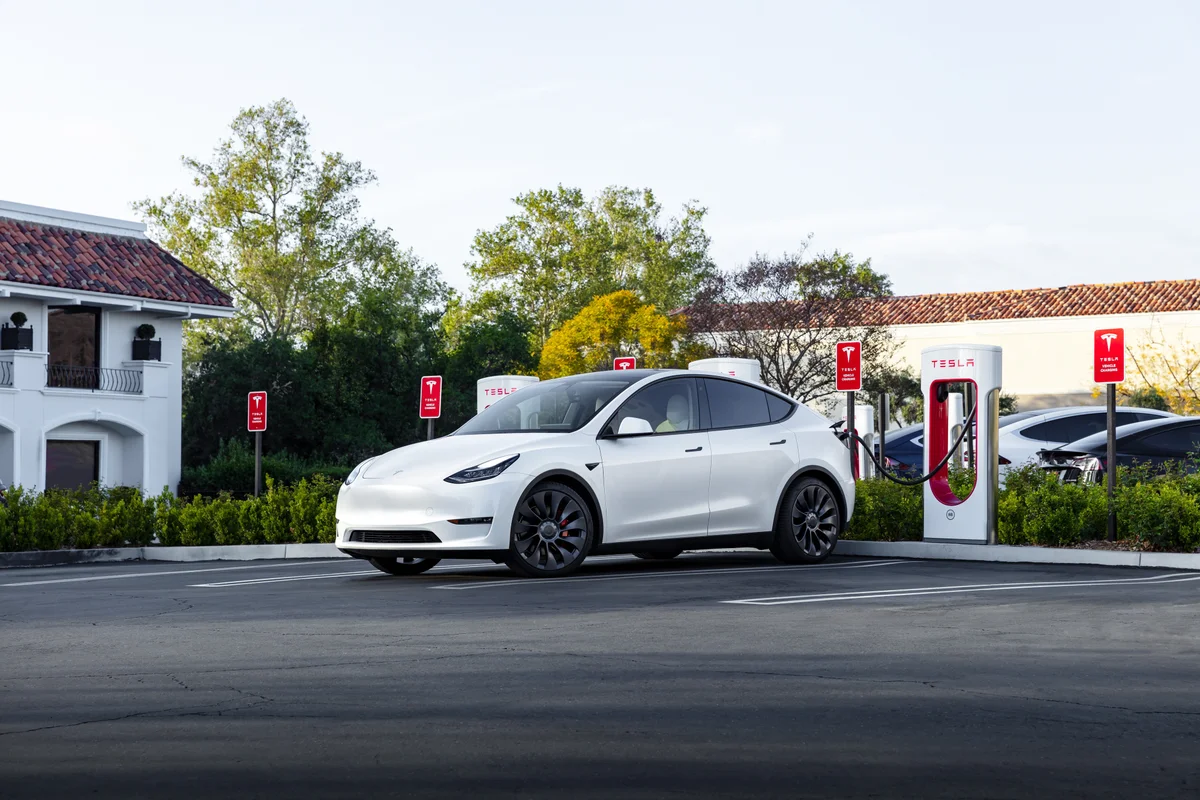Tesla, the trailblazer in electric vehicle (EV) technology, is set to revolutionize the charging experience for its users with the introduction of a wireless inductive home charger. This development follows a subtle hint in March, during the Investor Day event, where a promotional image unveiled what appeared to be a charging mat in a home garage. However, it was a recent episode of “Jay Leno’s Garage” featuring the Tesla Cybertruck that brought official confirmation of Tesla’s foray into wireless charging technology.
Chief Designer Franz von Holzhausen and VP of Vehicle Engineering Lars Moravy revealed the company’s pursuit of inductive charging. Von Holzhausen explained, “So you don’t need to plug something in at that point. You just pull in your garage, drive over the pad, and you’re charging.”
This shift in strategy is noteworthy for Tesla, as it had previously shown more interest in automated robot arms for charging. While a wireless home charging station was teased earlier this year, concrete details were scarce until now. The official acknowledgment of Tesla’s focus on a wireless inductive home charger underscores the company’s commitment to innovation and convenience for its customers.
The move towards wireless charging aligns with Tesla’s long-term vision of self-driving technology. The idea is that if cars can drive themselves, they should also be able to charge without human intervention. Despite potential benefits, concerns about the cost of wireless home charging persist, as installing traditional home EV chargers is already pricey.
In July, Tesla initiated a $76 million takeover of German wireless EV charging technology company Wiferion, marking a strategic move to acquire key patents and talent for developing its wireless charging technology. Franz von Holzhausen’s confirmation about inductive charging in the Cybertruck episode opens up possibilities for everyday users and robotaxi fleet operators.
The integration of inductive charging with PowerWall3, as emphasized by Lars Moravy, suggests the potential to power both the vehicle and an entire household when combined with solar energy. While wireless charging may enhance convenience for regular users, its true potential lies in the robotaxi industry. For Tesla to effectively implement wireless charging pads, they must match the power output of standard outlets and eventually reach fast charging speeds crucial for a constantly moving fleet.
In the pursuit of a future where EVs seamlessly charge themselves, Tesla’s strategic steps towards wireless charging unveil a new era in home charging, promising unparalleled convenience and automation for electric vehicle technology enthusiasts worldwide.

